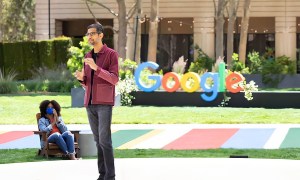

Before Google unveiled its first line of Chromebooks, Sundar Pichai, Chrome’s fearless leader, unveiled some key enhancements to the Chrome browser. These also affect the OS since it is, in essence, a big Chrome browser. Pichai revealed that Chrome now has 160 million users, up from about 70 million this time last year. He attributes this success to his team’s commitment to six-week version releases, which have given Chrome users regular speed enhancements and new feature support. Below are some new developments in the world of Chrome.

Chrome Store gives 95 percent of revenue to developers
Chrome’s Web Store has only been out for about three months, but it already boasts more than 17 million application installations. Not bad. Today, Google announced that it is now available in 41 more languages. Oh, and Angry Birds is now available.
After unveiling an in-app payments system that developers can implement with a single line of code, Google revealed that it will only take five percent of revenue, meaning developers get to keep 95 percent of any cash they make through their apps. This is a stark contrast to the mobile apps market, where most providers, including Android and Apple, take a 30 percent share of revenue from developers. There is no word on whether Google intends to lower its mobile app revenue share, but it may not need to. The Android market now boasts more than 200,000 apps. Still, this move may push developers to demand a greater revenue share.
Chrome browser speeds up

Thanks to enhanced support for Canvas 2D, and WebGL, Chrome can now compete with Internet Explorer 9 in Microsoft’s Fishy test. More than 500 fish sprites were shown moving on screen with no dip in framerate. Using WebGL, more than 10,000 fish were shown. These represent, according to Google, a 100x improvement in rendering.
These new abilities, as well as enhanced 3D effects were shown in a new interactive music video for Danger Mouse and Daniele Luppis’ new album, Rome, which is also features Jack White and Norah Jones. The image above shows a brief moment of the video, which allowed users to look around and manipulate the scenery in drastic ways. Those with a technical and creative edge can actually create structures and insert them into the video as well. The demonstration was very cool. If anyone has a link to it, please provide and we’ll post it.
Speak to me

Speech recognition is now available for Web Apps on Chrome. Google Translate has already taken advantage of the feature and developers can now integrate it into their own products. A Googler demonstrated the technology by searching for Emma Caulfield in a Web App called Clicker, and it worked very well. A Google Translate search for “Welcome to San Francisco” also worked flawlessly.


